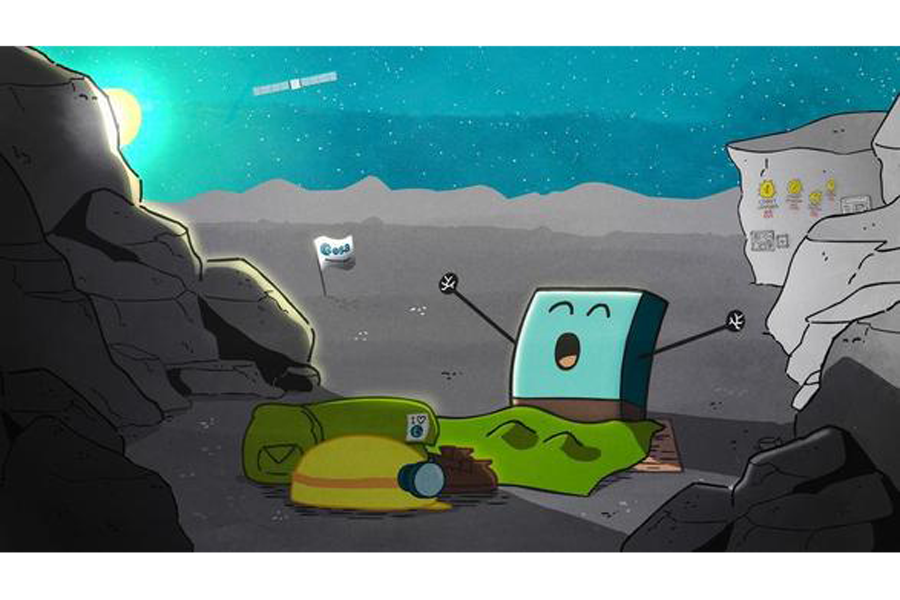Philae wakes up! Europe's plucky comet lander phones home.
Loading...
Sen—Space scientists got the news they had desperately been hoping for today when their comet lander Philae finally woke up and phoned home.
The washing-machine sized lander went into hibernation in November, 2014, after it bounced to a shaded spot on Comet 67P/Churyumov-Gerasimenko where it could not get enough sunlight to charge its batteries.
But today the European Space Agency (ESA) revealed the great news that Philae has recharged and contacted Earth via its mothership, the Rosetta spaceprobe that is orbiting the comet, currently 305 million km (190 million miles) from Earth.
ESA said that signals were received at mission control in Darmstadt at 20.28 UTC on Saturday, June 13. The probe communicated with Earth for 85 seconds, and more than 300 data packets had been analysed by teams at the Lander Control Center at the German Aerospace Center (DLR).
Philae Project Manager Dr Stephan Ulamec said: “Philae is doing very well: It has an operating temperature of -35ºC and has 24 Watts available. The lander is ready for operations.”
The data showed that Philae had been awake for a while before it was able to link up with Rosetta. Dr Ulamec said: “We have also received historical data. The lander had not been able to contact us earlier.”
The team are now waiting to contact Philae again when the probe’s orientation with Rosetta allows. ESA says there are still more than 8,000 data packets in Philae’s mass memory which will provide information on what happened to the lander in the past few days.
On hearing news of Philae’s return to life, Professor Monica Grady, a key member of the Rosetta science team at the UK’s Open University, tweeted: I’m in tears again @ESA_Rosetta @Philae_Ptolemy can it be true? #philaewakesup
And delighted Rosetta mission chief scientist Matt Taylor, famous for his body art that includes Rosetta on one leg, told Sen: “Well I knew it would come back and this saves me taking a grinder to my tattoo ;) “ He added: “We have more fun times ahead trying to get more science out. It’s early days but things look promising!”
When Philae landed on the comet, its harpoons failed to fire and it spent two hours bouncing before coming to rest. It appeared to be leaning at an angle with just two of its three feet on the surfce, and getting only a fraction of the sunlight its solar panels needed to gain power.
Despite that, the scientists were able to perform all ten main experiments that they had hoped to in the 60 hours before Philae’s power levels suddenly plunged and it fell silent. The team stressed then that the probe was not dead and that they hoped the probe would wake up when conditions improved.
Since November, the comet has been steadily getting closer to the Sun, meaning the comet has been getting more light and warmth, as demonstrated by the comet’s increasing activity as it fizzes with jets of gas and dust.
Since March, Rosetta has spent time listening for signals from Philae to show it has come out of hibernation. The best opportunity for this was expected to come from May onwards, and now the misison team’s faith in this outcome has been vindicated.
Now they hope they will be able to build on what Philae has already discovered, and produce great science from the comet’s surface as it approaches perihelion, its closest point to the Sun, in August.
Sen reported last week how ESA has narrowed down the exact location of Philae on the surface of 67P. But with it transmitting again, they now expect to be able to pinpoint its location exactly.
Related Links:
Is this Philae? Rosetta team find candidate for lost lander
One giant leap! Philae bounced across comet
Thank you and goodnight! Philae's power levels plunge
Original story from Sen. © 2015 Sen TV Limited. All rights reserved. This material may not be published, broadcast, rewritten or redistributed. For more space news visit Sen.com and follow @sen on Twitter.







